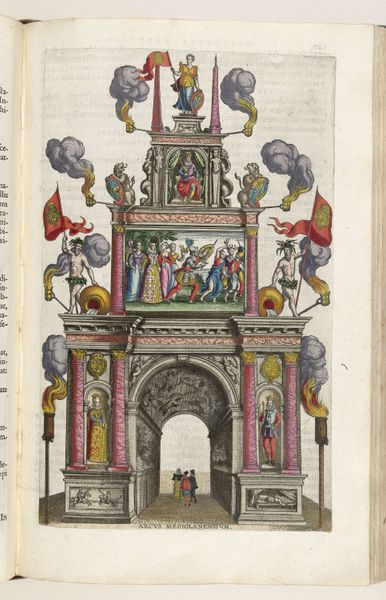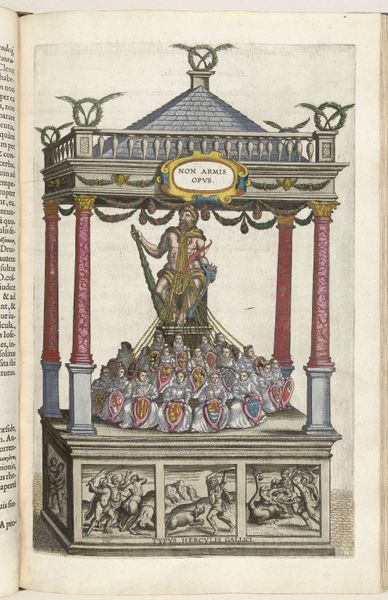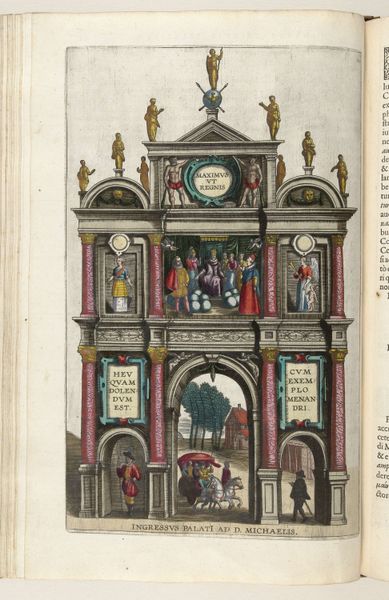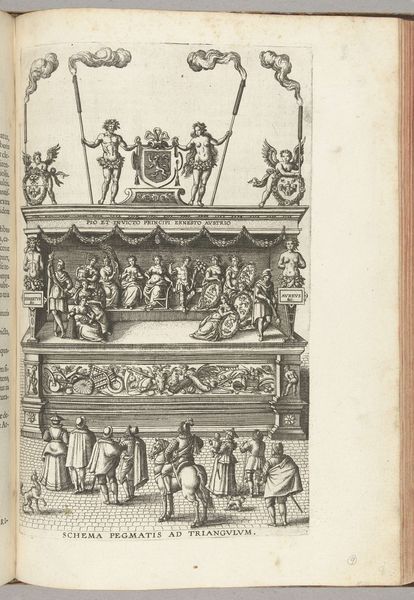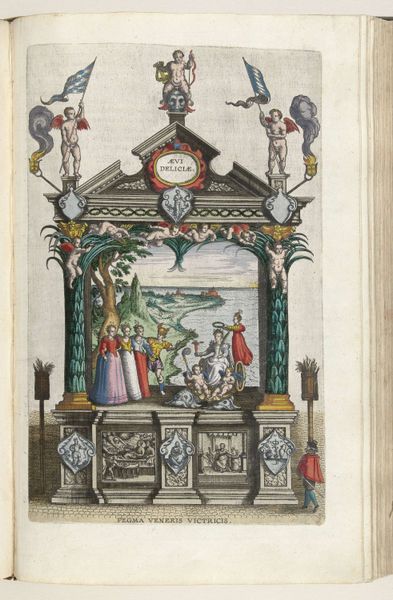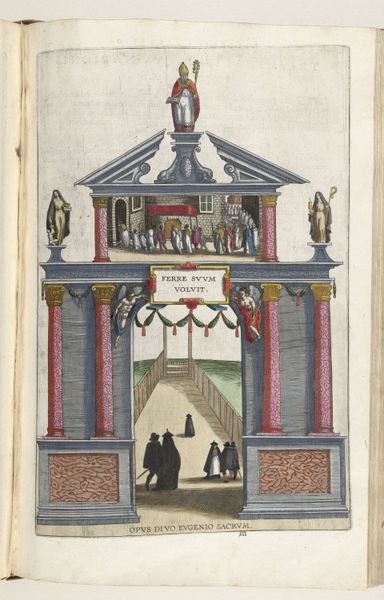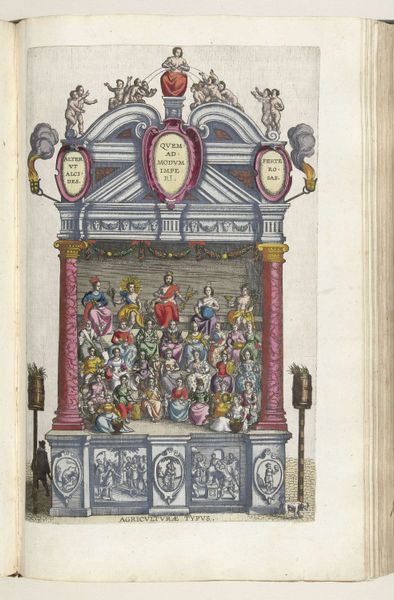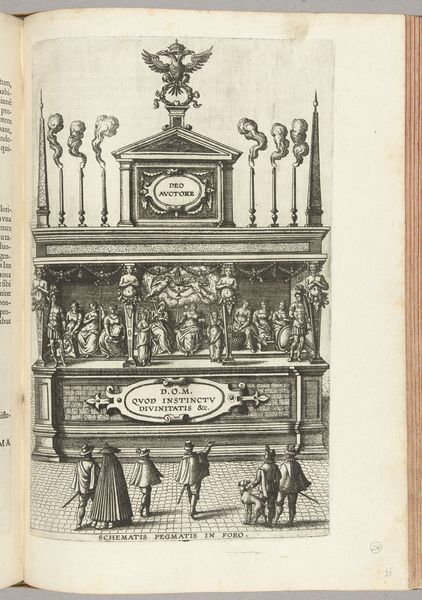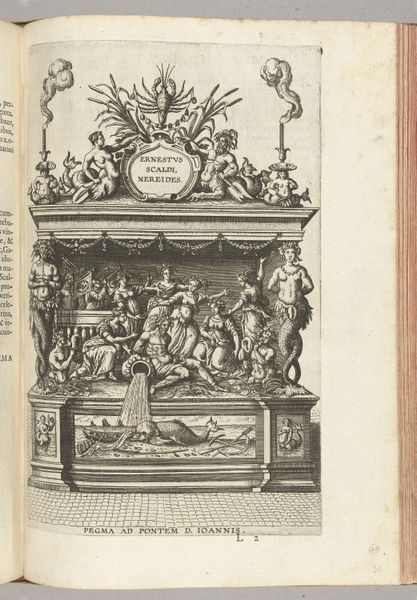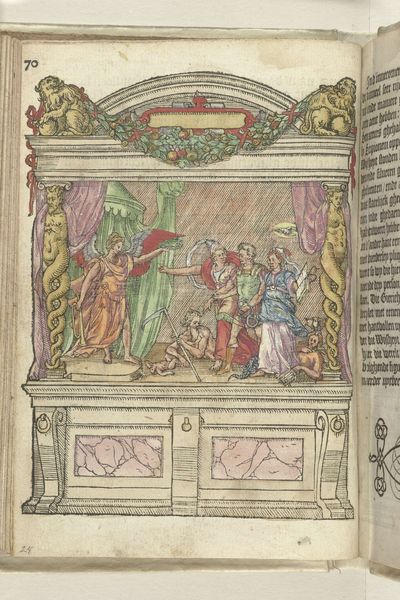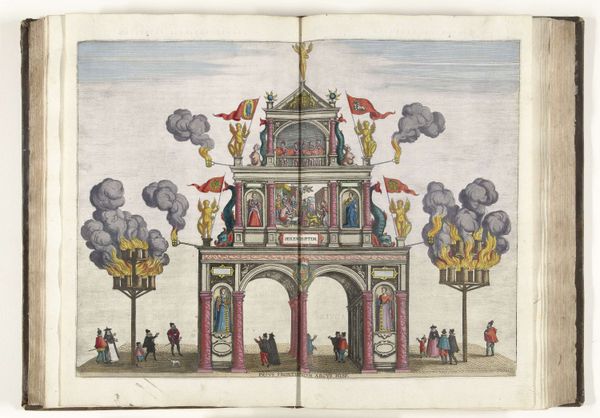
drawing, coloured-pencil, paper, ink
#
drawing
#
coloured-pencil
#
allegory
#
mannerism
#
paper
#
11_renaissance
#
ink
#
coloured pencil
#
history-painting
Dimensions: height 320 mm, width 213 mm
Copyright: Rijks Museum: Open Domain
Editor: This is “Toneel met Vrede en Gerechtigheid, 1599,” a colored-pencil, ink and paper drawing by Pieter van der Borcht, currently at the Rijksmuseum. It's a busy composition, a kind of theatrical stage design… I'm struck by how it seems to present an ideal, almost utopian vision of society. How do you interpret this work? Curator: It's crucial to understand the socio-political context here. This piece, created during the Renaissance, reflects a desire for stability and order in a period marked by conflict. It's no accident that "Peace and Justice" are center stage. The stage-like setting underscores the performative aspect of power and governance; this drawing shows not necessarily reality, but perhaps aspirations. How do we ensure justice and peace for all? Editor: The artist literally stages the debate of justice versus peace. But what about those figures surrounding the stage? Curator: Exactly! Look at who is included and excluded. What can that tell us about Renaissance society's view on class, gender, or religion? The piece reflects Mannerist ideals of elegance and artificiality but we should ask whose ideals were these? What were the lived realities for those outside of this seemingly harmonious representation? What is missing from this idealized vision, and whose voices aren't heard? Editor: It's interesting how the image aims for a utopian vision of peace but the artist can only see so far due to the artist's position and time. It raises important questions about power and representation that I hadn't considered initially. Curator: Precisely. It's about digging beneath the surface, asking critical questions, and understanding the complex web of power that shapes our perception of history.
Comments
No comments
Be the first to comment and join the conversation on the ultimate creative platform.
